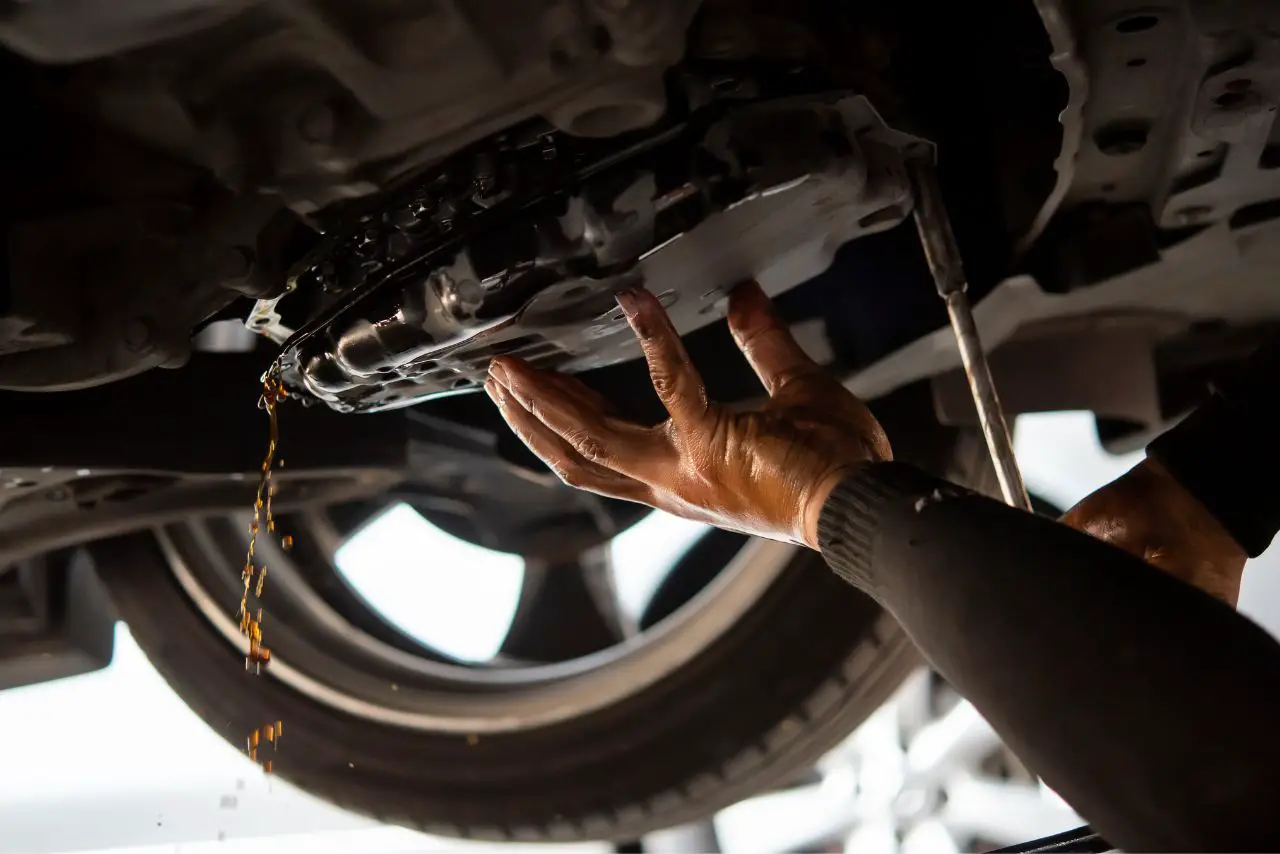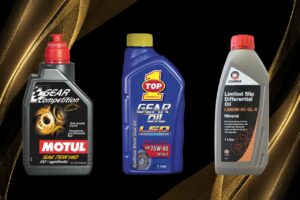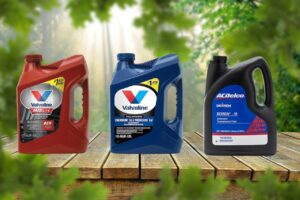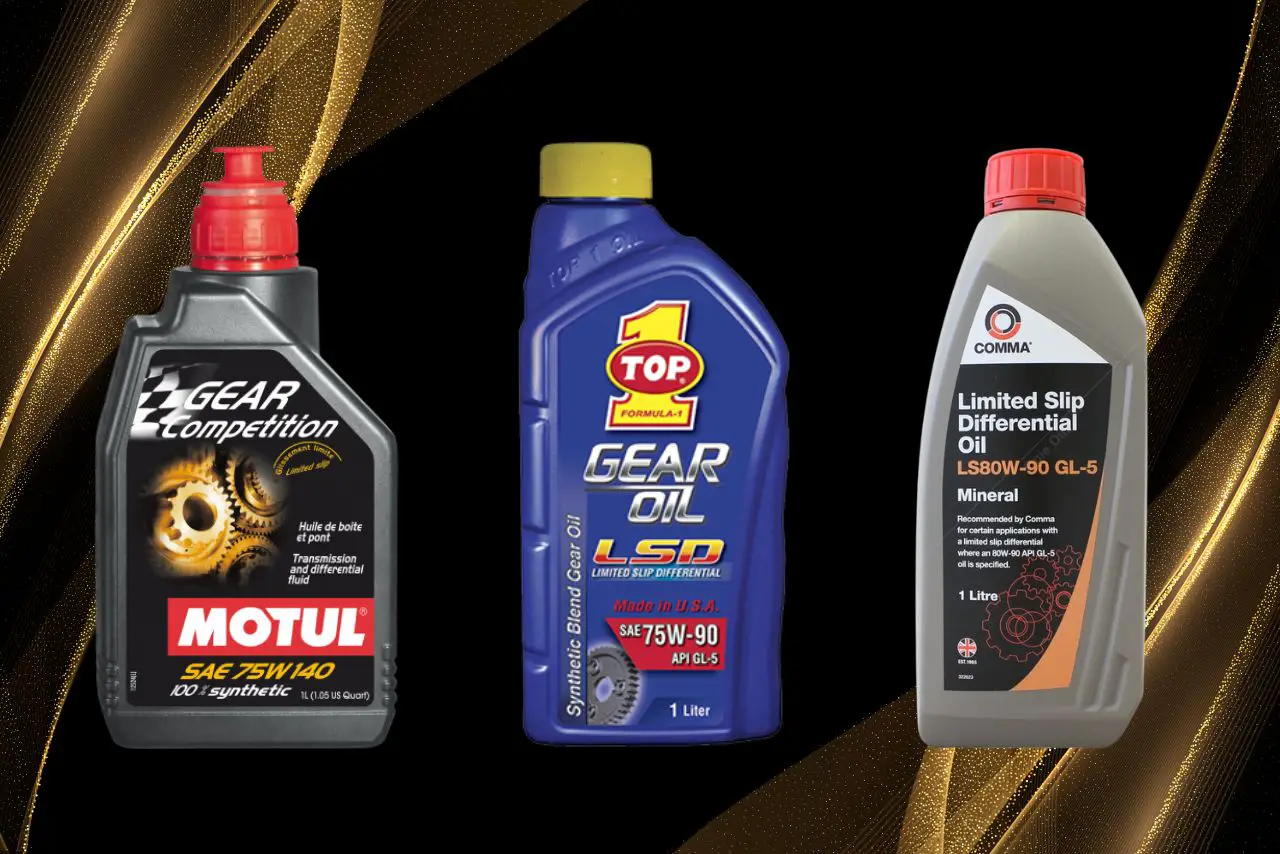Are you the proud owner of an Allison 1000 transmission? If so, you know that keeping your vehicle running smoothly requires regular maintenance and attention to detail.
One of the most important aspects of maintaining your transmission is ensuring that you use the right type of transmission fluid.
Choosing the right Allison 1000 Transmission Fluid Type can have a significant impact on the performance and longevity of your Allison 1000 transmission.
Allison recommends TES 668® Approved Fluids for use in Allison 1000 Series™ transmissions. These fluids are formulated to extend drain intervals and enhance transmission performance and durability in all operating environments.
With so many different types of transmission fluids available on the market, it can be overwhelming to determine which one is the best fit for your vehicle.
Table of contents
Importance of Choosing the Right Allison 1000 Transmission Fluid Type:
You gotta make sure you choose the right transmission fluid if you want your Allison 1000 transmission to run smoothly and avoid costly repairs.
Viscosity:
One of the key factors to consider when selecting the right fluid is viscosity. Viscosity measures the thickness or thinness of the fluid, which is critical to the transmission’s performance.
Choosing the right viscosity for your Allison 1000 transmission is crucial because it affects the fluid’s ability to flow through the transmission’s complex network of gears and pumps.
Synthetic or Conventional Fluids:
Another vital aspect to consider when choosing the right transmission fluid is whether to go for synthetic or conventional fluids.
Synthetic fluids are engineered to provide superior performance and protection to the transmission system.
They have a higher resistance to breakdown and can handle extreme temperatures, which makes them ideal for heavy-duty applications such as the Allison 1000 transmission.
On the other hand, conventional fluids are made from refined crude oil and are not engineered to provide the same level of protection and performance as synthetic fluids.
Choosing the right transmission fluid for your Allison 1000 transmission is essential to keep it running smoothly and avoid costly repairs.
You need to consider the viscosity of the fluid and whether to go for synthetic or conventional fluids.
By selecting the right fluid, you’ll ensure that your transmission system is well lubricated and protected from wear and tear, which will extend its lifespan and save you money in the long run.
Recommended Transmission Fluid Types:
When it comes to your Allison 1000 transmission, choosing the right transmission fluid is crucial.
Three of the most recommended fluid types for this transmission are Dexron VI, TES 295, and Transynd. Dexron VI is a popular choice due to its exceptional wear protection, while TES 295 is known for its ability to handle heavy-duty applications.
Meanwhile, Transynd is a synthetic fluid that provides excellent performance and extended drain intervals.
Choosing the right fluid can help your transmission last longer and perform better, so it’s important to pick the one that best suits your needs.
1. Dexron VI:
- Backward compatible with previous Dexron automatic transmission fluids and can be used as a much-improved replacement for older vehicles/transmissions originally using previous Dexron fluids
- Improved performance over previous Dexron fluids in: friction durability, viscosity stability, aeration and foam control, and oxidation resistance
- Potential to enable improved fuel economy and longer transmission life
- Provides for extended drain intervals. Provides consistent shift performance, even in extreme conditions.
| Detail | Information |
|---|---|
| Description | Licensed GM Dexron VI synthetic ATF. Color is red. |
| Benefits | Excellent friction properties and shear stability. Long fluid life. |
| Specifications | Meets Allison TES-295 requirements as a replacement for TES-298. |
| Change Interval | Can extend drain intervals beyond 50,000 miles. Follow OEM guidelines. |
If you’re wondering what type of transmission fluid to use for your Allison 1000, Dexron VI is a great option to consider.
This type of fluid is a synthetic blend that has been designed to provide superior performance, protection, and durability. Dexron VI is a top-quality fluid that has been formulated with advanced additives and viscosity modifiers, which makes it a great choice for high-performance transmissions.
Using synthetic fluid like Dexron VI offers a host of benefits for your Allison 1000. One of the main benefits is that it can improve the overall performance of your transmission and help it shift more smoothly.
Synthetic fluid also provides better wear protection, which means your transmission will last longer and require fewer repairs.
Additionally, synthetic fluid has a longer lifespan than conventional transmission fluid, so you won’t need to change it as often.
Overall, using Dexron VI in your Allison 1000 is an excellent choice if you’re looking to improve the performance and longevity of your transmission.
2. TES 295:
- WIDEST SPECIFICATION RANGE
- FILL FOR LIFE in passenger cars
- HEAVY DUTY DURABILITY
- OEM GRADE
- KEY PERFORMANCE METRICS
| Detail | Information |
|---|---|
| Description | Original factory-fill fluid specified by Allison. Color is red. |
| Benefits | Optimizes friction for enhanced durability and efficiency. Excellent shear stability. |
| Specifications | Meets Allison TES-295 and C-4 requirements. Similar to Dexron III. |
| Change Interval | Normal drain intervals up to 50,000 miles depending on use and conditions. |
Get ready to upgrade your transmission’s performance with TES 295, a high-quality fluid designed for heavy-duty transmissions.
This fluid is formulated to meet the rigorous demands of modern transmissions, providing superior protection against wear and tear, while improving shifting performance. TES 295 is recommended by many leading OEMs, making it a reliable choice for your Allison 1000 transmission.
One of the benefits of using TES 295 is its ability to withstand high temperatures, which is crucial for heavy-duty applications.
This fluid has a high viscosity index, which means it maintains its performance even at extreme temperatures. Additionally, TES 295 has excellent oxidation resistance, which prevents the fluid from breaking down over time.
When compared to other transmission fluids, TES 295 stands out for its superior performance, which translates into better fuel economy, longer transmission life, and reduced maintenance costs.
Don’t wait any longer, upgrade your Allison 1000 transmission with TES 295 and experience the benefits for yourself.
3. TranSynd 668:
- TranSynd is a full-synthetic, automatic transmission fluid designed specifically for ALLISON transmissions / TES 468 is now covered by TranSynd 668
- Allows for extended drain intervals of up to 300,000 miles / 48 months in general-duty transmissions and up to 150,000 miles / 48 months in severe-duty transmissions
- 12 times longer drain intervals than conventional and other non-TES 668 and non0-TES 295 fluids
- Shear stability that helps maintain a stable viscosity which provides wear protection in gears throughout the drain interval
- Improved gear protection, extended anti-shudder durability and extended clutch-friction durability
| Detail | Information |
|---|---|
| Description | Synthetic ATF from Phillips 66. Color is red. |
| Benefits | High viscosity index and shear stability. Enhanced friction properties. |
| Specifications | Meets Allison TES-295, TES-468, and C-4 requirements. |
| Change Interval | Drain intervals up to 50,000 miles depending on vehicle OEM guidelines. |
Key features of Transynd ATF:
Transynd is a solid option that meets all Allison’s specifications for 1000 series models.
By choosing Transynd for your Allison 1000 transmission, you can trust that you are using the best fluid for your heavy-duty vehicle.
Transynd is a fully synthetic fluid that has been specifically engineered to provide optimal protection and performance for Allison transmissions.
Its unique formula boasts superior thermal and oxidative stability, which means it can withstand high temperatures and extended drain intervals.
One of the main benefits of Transynd is its durability. Its advanced formula is designed to last up to six times longer than conventional transmission fluids, reducing maintenance costs and downtime for your vehicle.
Additionally, Transynd provides better performance in extreme temperatures, reducing the risk of transmission failure in harsh conditions.
When compared to other fluids, Transynd stands out as the clear winner in terms of longevity and protection.
See the table below for a comparison of Transynd with other popular transmission fluids.
| Fluid | Durability | Performance in Extreme Temperatures |
|---|---|---|
| Transynd | Up to 6x longer | Better performance |
| TES 295 | Up to 5x longer | Good performance |
| Dexron VI | Up to 4x longer | Average performance |
Overall, choosing Transynd for your Allison 1000 transmission is a smart decision that will provide long-lasting protection and enhanced performance.
Its superior formula and extended drain intervals make it a top choice for heavy-duty vehicles that require optimal transmission fluid.
4. Shell Donax TD:
| Detail | Information |
|---|---|
| Description | Full synthetic ATF from Shell. Color is red. |
| Benefits | Thermally stable with excellent wear protection. Built-in friction modifiers. |
| Specifications | Approved for use in Allison transmissions against TES-295. |
| Change Interval | Change fluid based on OEM recommendations. |
5. Mobilfluid 424
| Detail | Information |
|---|---|
| Description | Advanced synthetic ATF from Mobil. Color is red. |
| Benefits | Outstanding oxidation resistance and shear stability. High viscosity index. |
| Specifications | Meets Allison TES-295 and C-4 requirements. |
| Change Interval | Drain intervals up to 100,000 miles possible. Follow OEM guidelines. |
Differences Between Transmission Fluid Types:
Understanding the differences between transmission fluid types can save you from potential breakdowns and expensive repairs. Here are some key differences between synthetic and conventional transmission fluid:
Synthetic fluid:
Synthetic fluid is made from chemical compounds that are more resistant to heat and breakdown than conventional fluid.
This means that it can last longer and withstand more extreme conditions.
Conventional fluid:
Conventional fluid, on the other hand, is made from mineral oil and other natural ingredients. It is less expensive than synthetic fluid, but it may not last as long.
Popular Brands:
Some popular brands of transmission fluid include Valvoline, Mobil, Royal Purple, and Amsoil. Each brand has its own pros and cons, such as price, durability, and effectiveness in different types of transmissions.
It is important to choose the right transmission fluid for your specific Allison 1000 transmission.
Knowing the differences between synthetic and conventional transmission fluid, as well as the pros and cons of different brands, can help you make an informed decision when choosing the right fluid for your Allison 1000 transmission.
By doing so, you can avoid potential breakdowns and expensive repairs, and ensure that your vehicle runs smoothly and efficiently.
Factors to Consider When Choosing Transmission Fluid:
When choosing the right transmission fluid for your vehicle, there are several factors to consider.
By taking these factors into account, you can ensure that your transmission runs smoothly and efficiently for many years to come.
Vehicle Usage:
If you regularly use your vehicle for towing heavy loads or driving in extreme temperatures, you’ll want to make sure to choose the right type of fluid for your Allison 1000 transmission.
Using the wrong type of fluid can result in damage to your transmission and decreased performance.
When selecting transmission fluid, it’s important to consider your vehicle’s usage and the manufacturer’s recommendations.
If you use your vehicle for heavy-duty tasks, such as towing or hauling, you’ll want to choose a transmission fluid that is designed for high-stress situations.
Look for a fluid that has a high viscosity and is specifically formulated for heavy-duty use. Additionally, if you live in an area with extreme temperatures, you’ll want to choose a fluid that can handle the heat or cold.
Choosing the right transmission fluid is essential for vehicle maintenance and optimal performance.
Climate:
To ensure your vehicle can handle any weather conditions, it’s important to understand the effects of climate on transmission performance.
Extreme temperatures can have a significant impact on the transmission fluid, causing it to break down, degrade, and lose its lubricating properties.
This can lead to increased wear and tear on the transmission components, reduced fuel efficiency, and decreased overall performance.
To avoid these issues, it’s crucial to choose a transmission fluid that can withstand extreme temperatures and keep your engine running smoothly.
Additionally, maintaining a climate-controlled environment for your vehicle can help to extend the lifespan of your transmission and prevent costly repairs down the line.
By taking these steps to prioritize climate control in your transmission maintenance routine, you can enjoy the freedom of worry-free driving in any weather conditions.
Manufacturer Recommendations:
Now that you have a good understanding of how climate affects your Allison 1000 transmission, let’s talk about the manufacturer recommendations for the type of fluid you should use.
It’s important to follow these recommendations to ensure the best performance and longevity of your transmission.
Allison Transmission, the manufacturer of the Allison 1000, recommends using their own brand of transmission fluid, TES 295.
However, there are other transmission fluid alternatives available that are compatible with older models of the Allison 1000.
It is important to note that if you choose to use an alternative fluid, you must ensure that it meets the specifications outlined by Allison Transmission.
Using a fluid that is not compatible can cause damage to your transmission, leading to costly repairs. So, be sure to do your research and choose a fluid that is compatible with your specific model of Allison 1000.
How to Check and Change Transmission Fluid?
When it comes to maintaining your transmission, there are three essential things to keep in mind: checking fluid levels, draining and refilling, and following a maintenance schedule.
To check fluid levels, locate the transmission dipstick under the hood and remove it to see the current level.
When it’s time to drain and refill, make sure to use the appropriate type of transmission fluid and follow the manufacturer’s instructions.
By keeping up with these maintenance tasks, you can extend the life of your transmission and keep it running smoothly.
Checking Fluid Levels”

First, you’ll want to check the fluid levels in your Allison 1000 transmission to ensure optimal performance and avoid potential damage.
The importance of regular maintenance cannot be stressed enough, as neglecting to do so can lead to costly repairs down the line.
Signs of low fluid levels include slipping gears, difficulty shifting, and strange noises coming from the transmission.
To check the fluid levels, follow these steps:
| Step | Action | Emotion | |
|---|---|---|---|
| 1 | Park your vehicle on a level surface and turn off the engine. | Safety | |
| 2 | Locate the transmission dipstick, which is usually located near the back of the engine. | Determination | |
| 3 | Remove the dipstick and wipe it clean with a rag or paper towel. | Satisfaction4Reinsert the dipstick all the way back into the transmission and then remove it again to check the fluid level. | Eagerness |
Draining and Refilling:

To drain and refill your Allison 1000 transmission fluid, you’ll need to gather a few tools and materials. Here’s what you’ll need:
It’s important to properly maintain your transmission fluid to keep your vehicle running smoothly.
Signs of low transmission fluid levels include slipping gears, delayed shifting, and a burning smell.
If you notice any of these signs, it’s important to check your fluid level and refill it if necessary. To drain and refill, follow these steps:
Maintenance Schedule:
Don’t forget to keep up with the recommended maintenance schedule for your vehicle’s Allison 1000 transmission.
Regular maintenance is crucial to ensure that your transmission stays in top shape and continues to perform at its best.
The frequency of maintenance checks will depend on the make and model of your vehicle, as well as your driving habits.
It is important to consult your vehicle’s owner manual to determine the recommended maintenance schedule.
Checking for wear is an essential part of your transmission’s maintenance schedule. The transmission fluid should be checked regularly for any signs of wear or contamination.
If you notice any metal shavings or debris in the fluid, it is a sign that your transmission may need repair or replacement.
By keeping up with the recommended maintenance schedule and checking for wear, you can help extend the life of your Allison 1000 transmission and avoid costly repairs down the road.
You can watch this Video for changing your fluid:
Common Issues with Allison 1000 Transmission Fluid:
When it comes to common issues with Allison 1000 transmission fluid, you need to be aware of three key points: overheating, leaks, and contamination.
Overheating can cause damage to your transmission and lead to costly repairs. Leaks can result in low fluid levels, which can also cause significant damage.
Contamination can result in poor shifting performance and even transmission failure. It’s important to address these issues promptly to avoid further damage to your vehicle.
Overheating:
Excessive heat can wreak havoc on an Allison 1000 transmission, causing damage to both the fluid and internal components. Preventing overheating is crucial to maintaining the longevity of your transmission.
Signs of overheating include a burning smell, slipping gears, and a noticeable decrease in transmission performance.
To prevent overheating, make sure your transmission fluid is at the correct level and is changed regularly.
Also, ensure that your cooling system is functioning properly and that your transmission cooler is free from debris and not clogged.
Avoid heavy towing or hauling in hot weather conditions, and consider installing an aftermarket transmission cooler for added protection.
By taking these precautions, you can avoid the costly repairs that come with an overheated Allison 1000 transmission.
Leaks:

One way to prolong the life of your vehicle’s Allison 1000 transmission is by regularly checking for leaks.
Leaks are a common issue with transmissions, and they can lead to significant damage if not detected and repaired promptly.
Here are some tips on preventing leaks and repairing them when they occur:
By following these tips, you can help prevent leaks and prolong the life of your Allison 1000 transmission. If you do experience a leak, it’s important to address it promptly to avoid further damage.
With proper maintenance and care, your vehicle’s transmission can provide reliable performance for years to come.
Contamination:
To prevent contamination of your vehicle’s Allison 1000 transmission fluid, it is essential to regularly check the condition of the fluid and the transmission’s components.
Contamination can occur due to a variety of reasons such as worn-out seals, damaged gaskets, and improper maintenance. It is crucial to take preventive measures as transmission contamination can lead to severe damage to your vehicle and can even cause a breakdown while driving.
One of the symptoms of contaminated transmission fluid is a burnt smell and discolored fluid. If the transmission fluid appears dark brown or black, it is a sign of contamination.
Additionally, if the fluid has a gritty texture or metallic particles in it, it indicates that the transmission is contaminated. It is important to address these issues immediately as they can lead to severe damage to the transmission.
Regular maintenance and inspection of the transmission fluid and components can help prevent contamination and ensure the longevity of your vehicle’s Allison 1000 transmission.
| Prevention Measures | Symptoms of Contamination | |||
|---|---|---|---|---|
| Regular maintenance | Burnt smell | |||
| Inspection of fluid and components | Discolored fluid | |||
| Addressing issues immediately | Gritty texture | |||
| Metallic particles | Proper storage and handling of fluids | Excessive heat or noise |
Frequently Asked Questions:
What is the recommended interval for changing Allison 1000 transmission fluid?
To keep your transmission in good condition, it’s important to follow a maintenance checklist. The recommended frequency for changing transmission fluid varies, but it’s typically between 30,000-60,000 miles. Don’t neglect this important task, as it can lead to costly repairs down the road.
Can I use a different brand of transmission fluid instead of the recommended type for Allison 1000?
Using alternative fluid types for Allison 1000 may lead to potential risks such as reduced transmission performance and damage to transmission components. It is recommended to use the specific fluid type recommended by the manufacturer for optimal results.
Does the type of transmission fluid affect the performance of my Allison 1000 transmission?
Using the wrong transmission fluid can negatively affect the performance of your vehicle. Viscosity plays a crucial role in Allison 1000 transmission function, making it important to use the OEM recommended fluid for optimal performance. Don’t compromise on quality for freedom.
Is it necessary to flush the transmission system before changing the Allison 1000 transmission fluid?
When changing the transmission fluid, flushing is necessary for longevity. Over time, debris accumulates in the transmission, leading to wear and tear. Flushing removes this debris, which prolongs the life of your transmission.
What are the consequences of using the wrong type of transmission fluid for my Allison 1000 transmission?
Using the wrong transmission fluid can lead to severe consequences, such as transmission failure, slipping gears, and reduced performance. It is crucial to ensure compatibility with your vehicle’s specifications to avoid costly repairs and maintain optimal driving conditions.
Conclusion and final thoughts 💭
Now that you understand the importance of choosing the right transmission fluid, you should be able to confidently select the best type for your Allison 1000 transmission.
Remember that using the recommended type of fluid is crucial to ensuring smooth operation and preventing damage to your transmission.
When choosing transmission fluid, consider factors such as viscosity, friction modifiers, and additives.
It’s also important to regularly check and change your transmission fluid to maintain optimal performance and prevent issues such as overheating or slipping.
By following these guidelines and being proactive in maintaining your transmission, you can ensure that your vehicle runs smoothly and efficiently for years to come.
Latest Posts:
- 10 Best Gear Oil for Limited Slip Differentials (Reviewed!)
- Allison 1000 Transmission Fluid Type (5 Best Options!)
- 91 Octane Vs 93 Which One You Use? (The Surprising Truth!)
- Oil Pressure Gauge Not Working: (Guaranteed Fix!)
- 10 Best Transmission Fluid for 4l60e (Tested by Experts!)
- 10 Best Ceramic Coating For Wheels (Used By Real Users!)











Leave a Reply